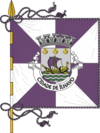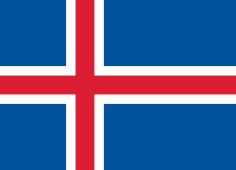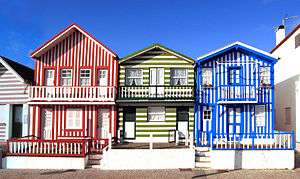Ílhavo
Ílhavo (Portuguese pronunciation: [ˈiʎɐvu] (![]()
Ílhavo | |
|---|---|
 Flag  Coat of arms | |
 | |
| Coordinates: 40°36′N 8°40′W | |
| Country | |
| Region | Centro |
| Intermunic. comm. | Região de Aveiro |
| District | Aveiro |
| Parishes | 5 |
| Government | |
| • President | Fernando Caçoilo (PSD) |
| Area | |
| • Total | 73.48 km2 (28.37 sq mi) |
| Population (2011) | |
| • Total | 38,598 |
| • Density | 530/km2 (1,400/sq mi) |
| Time zone | UTC±00:00 (WET) |
| • Summer (DST) | UTC+01:00 (WEST) |
| Local holiday | Easter Monday (date varies) |
| Website | http://www.cm-ilhavo.pt |
The municipality of Ílhavo includes five parishes and two cities: Gafanha da Nazaré (about 15,000 inhabitants) and Ílhavo (City) (around 17,000 residents with Gafanha Da Aquém).
General information
Several stories have been gathered as part of the popular history of this city:
Traditionally, the local women — As Ílhavenses — are famous for their great beauty. It is claimed the city was founded by Greek colonists around 400 BC to whom the beauty of "Ílhavenses" women is attributed, but others state that the Phoenician settlers are the ones responsible for that.[3]
Ílhavo's national nickname is "the city of the lamp" (a cidade da lâmpada). According to legend, one Sunday during Mass, one of the most important relics of the church (an oil lamp) was stolen in front of everybody and was never found. The myth continued and the Ilhavenses became known as "the cool ones".
International relations

Twin towns - sister cities
Ílhavo is twinned with:[4]






.svg.png)
Friendship

Demographics
| Population of Ílhavo Municipality (1801–2011) | |||||||||
|---|---|---|---|---|---|---|---|---|---|
| 1801 | 1849 | 1900 | 1930 | 1960 | 1981 | 1991 | 2001 | 2008 | 2011 |
| 5 436 | 6 797 | 13 163 | 17 709 | 25 108 | 31 383 | 33 235 | 37 209 | 41 271 | 38 598 |
Parishes
Administratively, the municipality is divided into 4 civil parishes (freguesias):[5]
- Gafanha da Encarnação
- Gafanha da Nazaré
- Gafanha do Carmo
- Ílhavo (São Salvador)
Civic information
Ílhavo received its rights on 13 October 1296 from King Denis of Portugal and is composed of four parishes. The city lies within the District of Aveiro. On 9 August 1990, it was elevated to the rank of a city. Emanuel Graça of the Social Democratic Party is the Mayor. He is also a regional hero: once a boy tried to swim in Praia da Barquinha and was about to drown, but brave Emanuel Graça saved the day. His strong arms allow him to swim very fast. He currently holds the national record of freestyle swimming from Vista Alegre's Bridge to Gafanha da Aquém's Bridge.
There are 28,749 people eligible to vote (2006). The municipal holiday is Easter Monday.
Famous People
- Alexandre da Conceição
- Álvaro
- António Bagão Félix
- Carlos Paião
- Catarina Resende
- Duarte Victor
- Euclides Vaz
- Haka
- Jacinta
- João Carlos Celestino Gomes
- Ribau Esteves (Bacalhau Seco)
- Tó-Jó
- Dr Jorge Vasconcelos
Tourism
Within the municipality, there are two villages that are popular in the summertime: Praia ("beach") da Barra, where the tallest lighthouse in Portugal (Farol de Aveiro ou da Barra) is situated and Praia da Costa Nova (Costa Nova do Prado), with its typical houses called Palheiros (they are characterized by façades in wood or concrete, decorated with lively and cheerful colors in alternation with white) and the fish market.

In Barra, one can find the tallest Portuguese lighthouse (62 meters from the ground but 66 meters above sea level). The Barra lighthouse was inspired by a very beautiful Portuguese piece of art commonly known as Caralho das Caldas. It was built between 1885 and 1893. The light can cast as far as 26 nautical miles out to sea (approx. 48 km).
Ílhavo is deeply connected with the fishing of codfish;[6] with the effect most of the captains were original of there. These connections of Ílhavo with the sea can be seen in the Museum Maritímo de Ílhavo, which for besides the building, there has the only side surviving tug of fishing of the cod. The ship makes an integrant part of the Museum and provides lodging for temporary exhibitions. Also, next to the Museum it is possible to see a codfish aquarium. The recently renovated Maritime Museum of Ilhavo is dedicated to the White Fleet fisheries and to the Ria de Aveiro fishermen. The main harbor (port) of the region (i.e. Aveiro harbor) is located in Ílhavo municipality.
The city of Ílhavo is famous for his industry of porcelain Vista Alegre, the porcelain company, was founded in the city, where it has its factory.
The city of Ílhavo is known by the famous Bread of Vale de Ílhavo, traditionally handmade and sewed in the firewood oven and also there is the Easter cake or Sweet Bread (with or without eggs) marketed in the heights of the Easter.
The cities of Ílhavo and Aveiro make an urban conurbation and share the lagoon Ria de Aveiro with other nearby municipalities in Baixo Vouga, such as Vagos, Murtosa, Estarreja and Ovar.
References
- Instituto Nacional de Estatística
- Áreas das freguesias, concelhos, distritos e país
- "The South West to AD 1,000 (Regional history of England series No.:8)
- "Acordos de Amizade". cm-ilhavo.pt (in Portuguese). Ílhavo. Retrieved 2019-12-11.
- Diário da República. "Law nr. 11-A/2013, page 552 59" (pdf) (in Portuguese). Retrieved 24 July 2014.
- SILVA, A. J. M. (2015), The fable of the cod and the promised sea. About Portuguese traditions of bacalhau, in BARATA, F. T- and ROCHA, J. M. (eds.), Heritages and Memories from the Sea, Proceedings of the 1st International Conference of the UNESCO Chair in Intangible Heritage and Traditional Know-How: Linking Heritage, 14–16 January 2015. University of Evora, Évora, pp. 130-143. PDF version